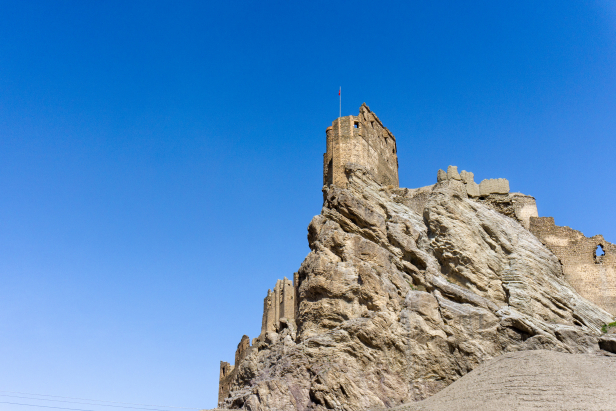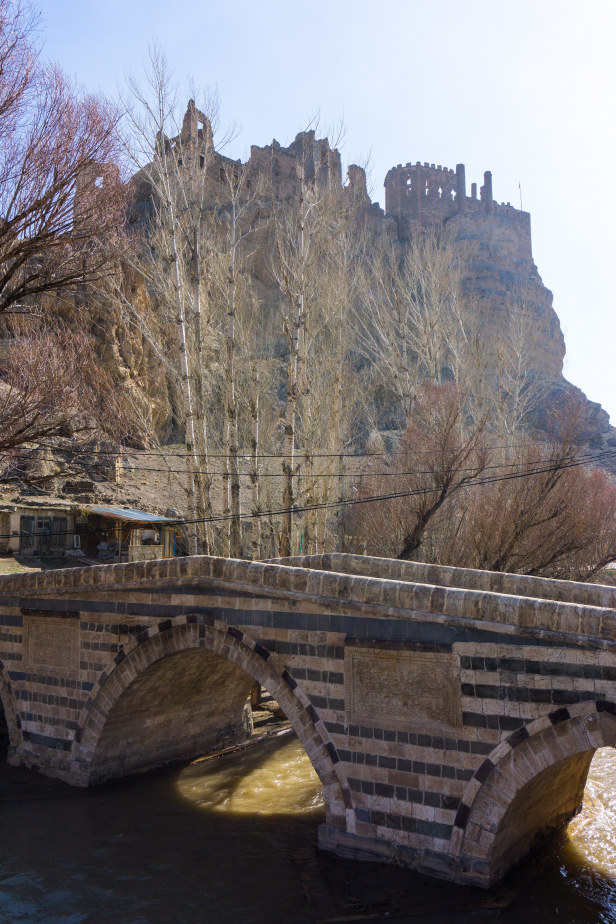Hoşap Castle
Hoşap Kalesi
/ By Josh
Cost: Complicated
See access explanation below
Great for: Castles, Medieval History, Urartian History, Funky Looking Lions
In the arid hills of the south-east of the Province of Van is one of the region’s most striking castles. Built on top of a sheer crag of rock, Hoşap Castle towers above the modern village of Güzelsu, the Turkish translation of Hoşap, which means “beautiful water” and comes from the stream at the base of the castle.
Hoşap Castle was built in the mid 17th century by Mahmudi chieftain Sarı Süleyman (Süleyman the Blonde). Under the authority of the Ottomans, the Mahmudis were the local rulers over the region. The castle, especially its upper keep, was built in a fine style and served not only as a defensive fortress but as the palace of Sarı Süleyman himself.
Hoşap Castle consisted of two parts: the castle built on top of the hill, and a lower fortified village. The lower village sits at the foot of the castle on the north side where the slope comes down less steeply. Today the village looks much like it may have hundreds of years ago: flat roofed homes and stables made of mud-brick filling a low depression between the castle mound and a low hill of purple-gray rock. This village was surrounded by a mud-brick wall, much eroded today, though still quite striking. Beyond this lower wall there are the remains of five outer watch towers.

The upper castle also consists of two parts: an inner and outer keep. The inner, which sits on the highest point of the rock was the harem, or personal residence of the ruler and his family, whereas the outer portion, known as the selamlik, was the public section.
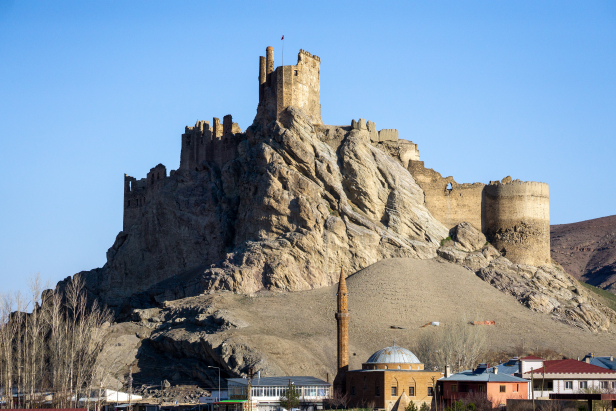
One of the most interesting parts of Hoşap Castle is the fine doorway, which is tucked into a corner of one of the large round towers. The door itself is original and made of wrought iron with patterns etched into its surface. Marks left by gunshots mar the face of the door and a couple of bullets are still lodged in the iron. Above the door is a large panel of Persian script as well as a crest, flanked by a pair of chained lions.


Subscribe to The Art of Wayfaring
It is believed that Hoşap Castle was actually expanded by Sarı Süleyman, rather than established. There is some much older Urartian masonry still visible at points in the castle. Reports of “the Castle of the Mahmudis” predates the date given by Sarı Süleyman and Armenian sources refer to a pair of small churches here. Though, lacking any significant archaeological research, it’s difficult to say exactly how far back this site actually goes.
Access to the castle is somewhat complicated as the situation is prone to change. At times a local in the village will serve as warden (Bekçi) and be able to open the door for you, sometimes taking a fee and sometimes not. At other times the key is kept in the police headquarters (karakol) on the edge of town, and you’ll need to go there to request it. Access to the Police Headquarters is a bit tedious but doable. At other times there is restoration work underway and the castle is closed completely.
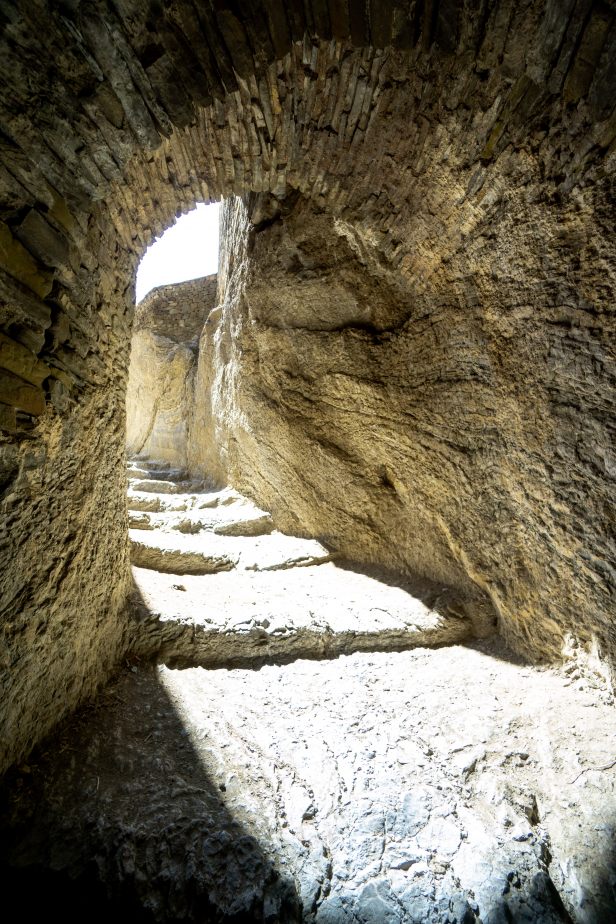
Beyond the castle itself there are a few other interesting historic sights worth visiting. The first is the historic Hoşap Bridge, built in 1671 with a pattern of black and white stripes. To the south of the castle, across the river is Seyyid Abdurrahman Arvasi Tomb and Madrasah (though google maps shows another name). To the west of the castle, along the highway, is another Tomb and Madrasah complex, though there doesn’t seem to be any information regarding its name. Both of these small complexes have been recently restored though they seem to have been abandoned and animals have made a mess of them.
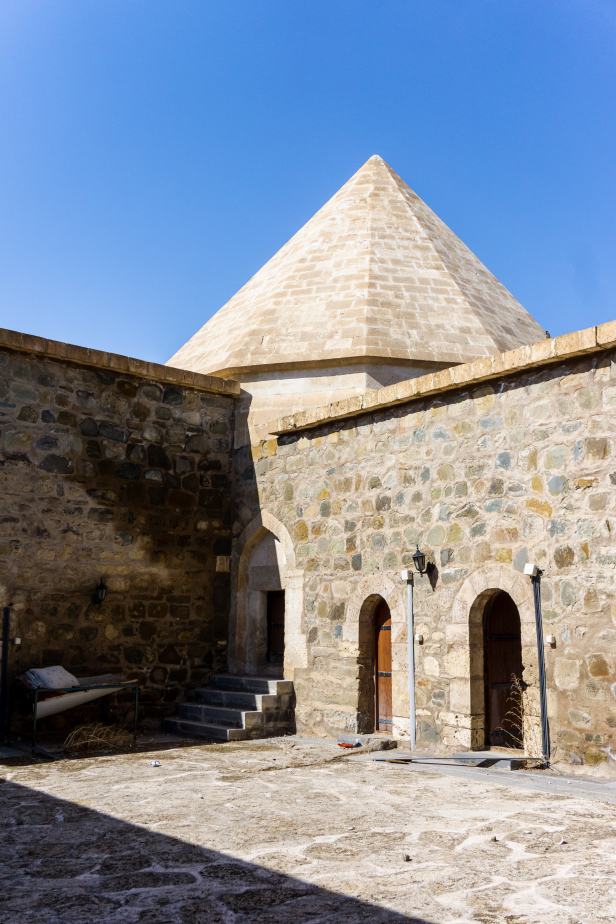
How To Get There
General
Hoşap Castle sits along the Van-Hakkari Highway (D975) in the village of Güzelsu, about 55 kilometers from the City of Van. There is Dolmuş (minibus) service from Van as well as larger busses running between Van and Hakkari.
For more about car rental and driving in Turkey make sure to read our full driver’s guide.
Where To Stay
There are no hotels in the immediate area so you will likely need to stay in the city of Van itself or the town of Edremit, just outside the city limits. Edremit has some upper-end boutique hotels as well as some resorts along the waterfront. For more mid-range and cheap hotels the city center of Van is where you’ll find these with a couple higher-end hotels mixed in.
Other Tips
Planning on visiting Hoşap Castle? Make sure to check out the rest of Van Province’s amazing sites and the rest of the region’s attractions.
Subscribe to The Art of Wayfaring
Have any tips or info to add? Spot any mistakes? We’d love to hear about it.

